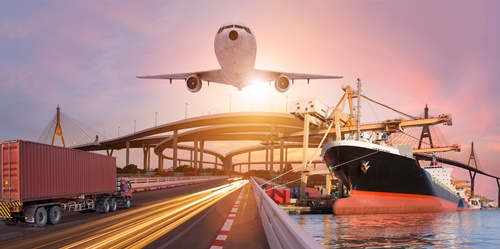Article by: Asst. Prof. Suwan Juntiwasarakij, Ph.D., Senior Editor
Fast and low-cost delivery is no longer an expensive option, but rather a business essential. Up-to-date, retailer needs to have excellent distribution, a solid online presence and the ability to execute same day delivery.

Source: Dotterl, Bruns, Dunkel, and Ossowski
IN THE NAME OF SHIPPING
Crowdshipping, sometimes referred to as crowd logistics, applies the concept of crowdsourcing to the personalized delivery of freight using social networking to behave collaboratively and share services and assets for the greater good of the community

Source: Shipit Official – Crowdsourced Express Delivery
Crowdsourced delivery is an emerging method of fulfillment that leverages networks of local, non-professional couriers to deliver packages to customers’ doors. While most common in meal and grocery delivery, this model is springing up everywhere as traditional retailers look for ways to cut costs and maximize supply chain efficiency.

Source: Parcel delivery, the future of last mile, McKinsey & Company
CROWDSHIPPING RISES AND E-COMMERCE THRIVES
The steady rise of e-commerce pushes supply chain and logistics companies and their retail partners to deliver is becoming a major competitive advantage. Gen Z and younger Gen Y consumers will make up the bulk of shoppers within the next decade, with Gen Z along expected to be the largest generation by 2026. This growing demand will drive up same-day delivery volumes to account for $200 billion online sale, according to McKinsey.

Source: Parcel delivery, the future of last mile, McKinsey & Company
In addition, platform-to-consumer delivery market on online delivery services that, for example, provide customers with meals from partner restaurants that do not necessarily have to offer food delivery themselves – that is, the platform handles the delivery process.

According to Statista analysis, revenue in this segment is projected to reach $79.6 billion in 2021. It is also expected to show an annual growth rate (CAGR 2021-2024) of 6.8%, resulting in a projected market volume of $96.86 billion by 2024. The average avenue per user (ARPU) is expected to amount to $100.61. In global comparison, most revenue will be generated in China which is expected to reach $41.90 billion by 2021

TAKE-HOME MESSAGE: THE STARTUPS AND THE FUNDINGS
Most funding, approximately $11.1 billion was raised by startups offering last-mile delivery services to retailers and individual. This last-mile segment benefit from the growth in e-commerce logistics. Most of these startups rely on unconventional delivery modes such as crowdsourced delivery, drone, AVs, and parcel locker. In this regard, freight platform received the most corporate funding, and this threaten to replace traditional intermediaries.





